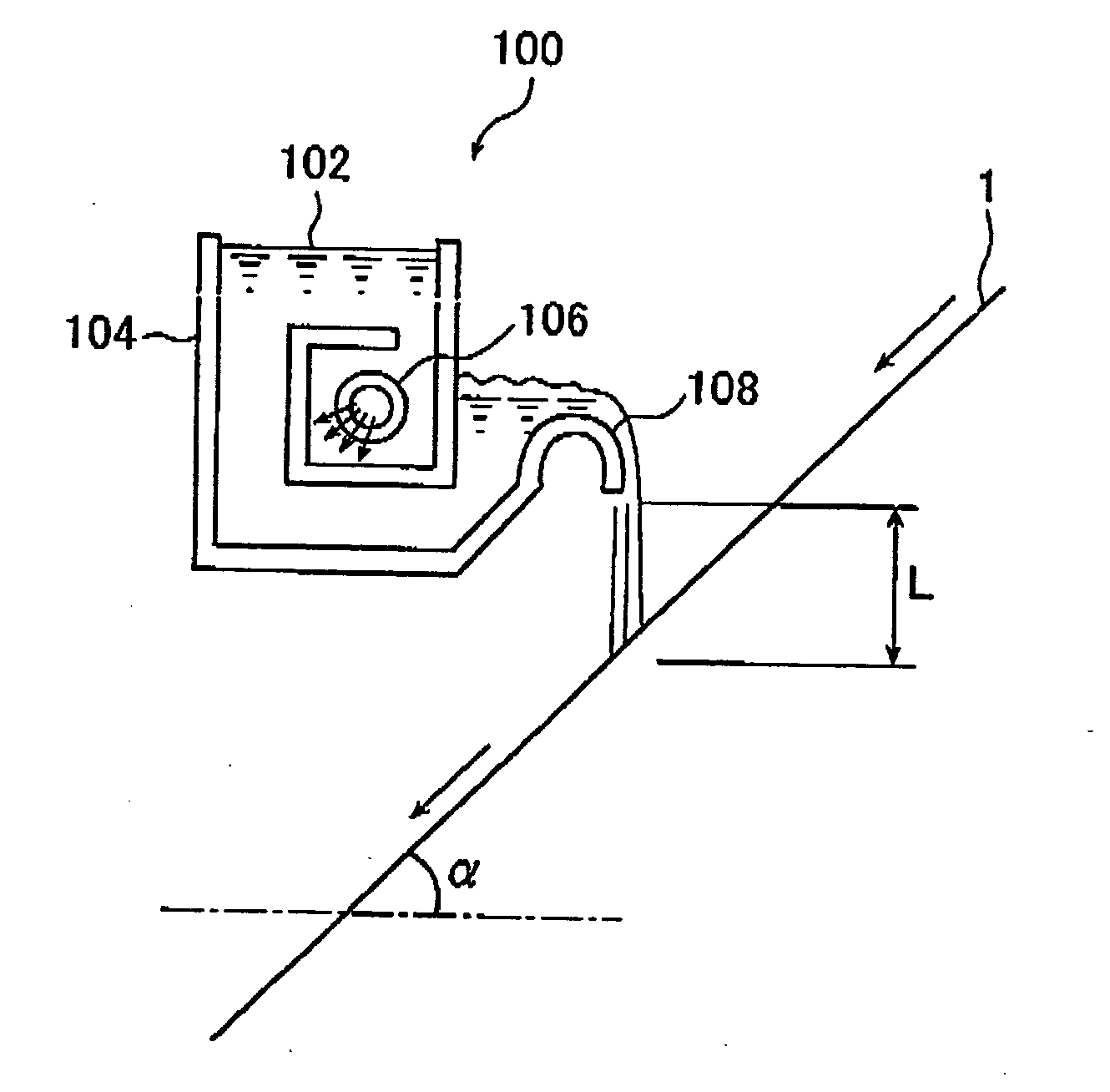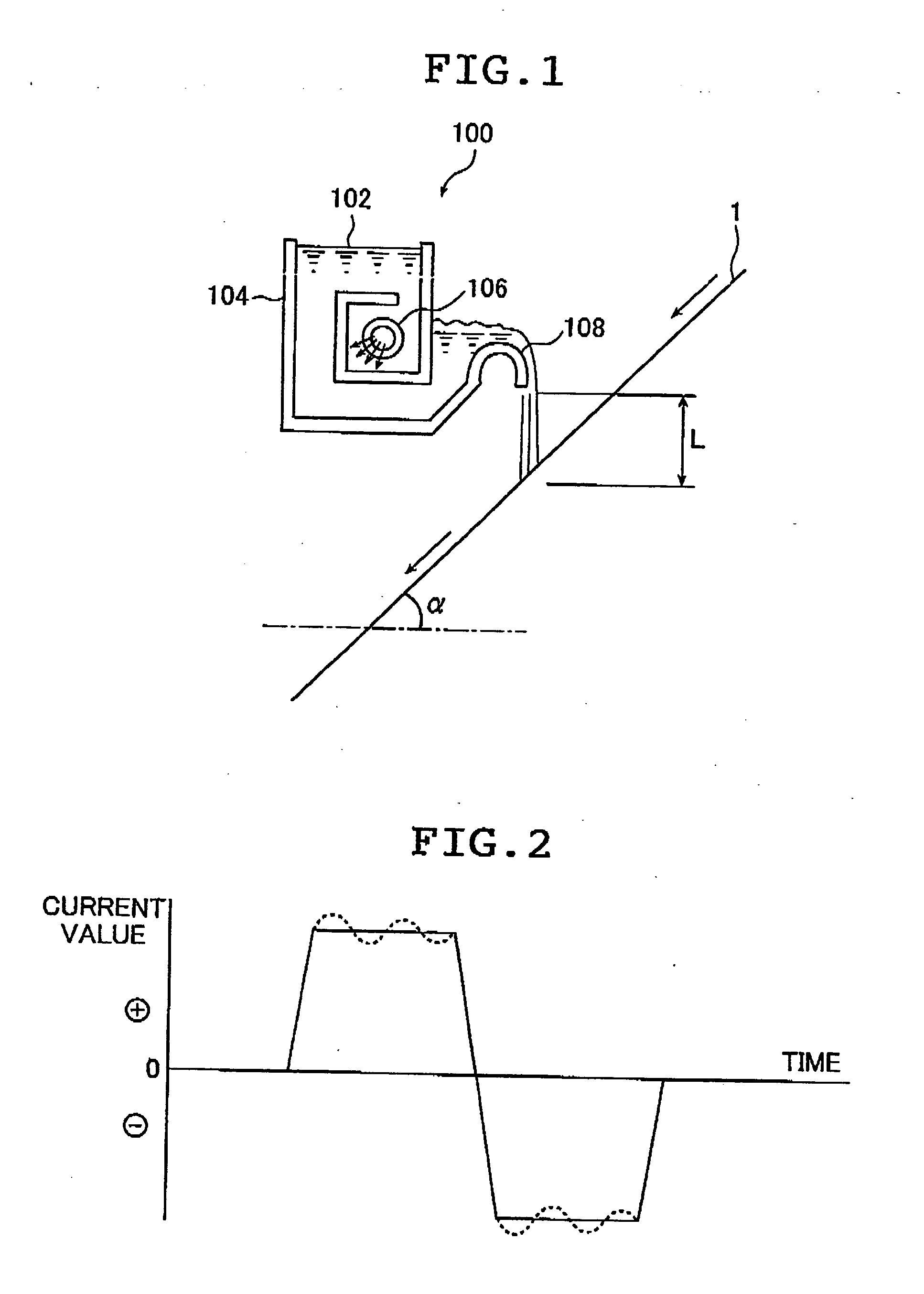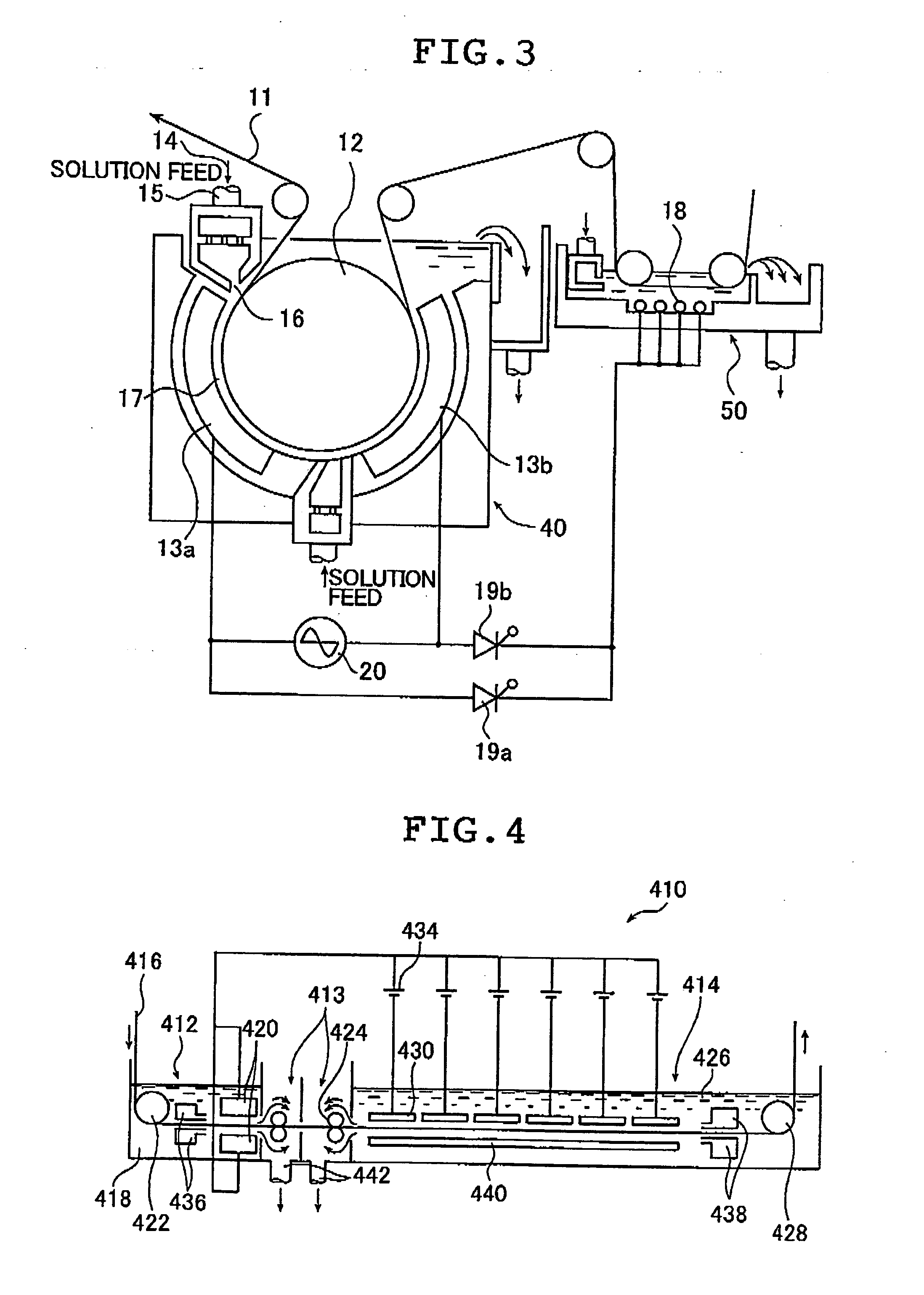Method of manufacturing lithographic printing plate support
a technology of lithographic printing plate and support, which is applied in the field of manufacturing a lithographic printing plate support, can solve the problems of reducing the life of the press, affecting the quality of the plate, so as to improve the scumming resistance and the resistance to piling. , the effect of excellent press li
- Summary
- Abstract
- Description
- Claims
- Application Information
AI Technical Summary
Benefits of technology
Problems solved by technology
Method used
Image
Examples
examples
[0290] Hereinafter, the present invention is described in detail with reference to non-limitative examples.
1. Manufacture of Aluminum Plate Embossing Roll
[0291] A roll of tool steel (SKD11) that had been quenched to a hardness of Hv750 was successively subjected to treatments (1) to (5) below, yielding an aluminum plate embossing roll.
(1) Mirror Polishing
[0292] Buffing was carried out as the mirror polishing process, thereby removing marks left by the grindstone used to abrade the surface of the roll. Of the buffed surface, the average roughness Ra was 0.2 μm and the maximum height Rmax was 1 μm. The average roughness Ra and the maximum height Rmax were measured according to the measurement procedures for the arithmetic mean deviation of the profile Ra and maximum height of the profile Ry defined in JIS B0601-1994.
(2) Blasting
[0293] The roll surface was subjected to graining treatment by air blasting it twice using a grit material composed of #80 mesh alumina particles. Eac...
examples 1 to 7 and 10
, and Comparative Examples 1 to 7
[0301] The aluminum plates obtained in the above-processes were subjected to surface treatments described below to obtain the lithographic printing plate supports in Examples 1 to 10 and Comparative Examples 1 to 7 as shown in Table 2.
[0302] The aluminum plates were successively subjected to the following surface treatments (a) to (g).
(a) Etching in Aqueous Alkali Solution (First Etching Treatment)
[0303] Etching was carried out by spraying the aluminum plates with an aqueous solution having a sodium hydroxide concentration of 370 g / L, an aluminum ion concentration of 100 g / L and a temperature of 60° C. from a spray line. The amount of material removed by etching from the surface of each aluminum plate to be subsequently subjected to electrochemical graining treatment was as shown in Table 2.
[0304] The solution was removed from the plates with nip rollers. Rinsing treatment was then carried out for 5 seconds using fanned-out sprays of water from ...
PUM
| Property | Measurement | Unit |
|---|---|---|
| depth | aaaaa | aaaaa |
| Ra | aaaaa | aaaaa |
| Ra | aaaaa | aaaaa |
Abstract
Description
Claims
Application Information
 Login to View More
Login to View More - R&D
- Intellectual Property
- Life Sciences
- Materials
- Tech Scout
- Unparalleled Data Quality
- Higher Quality Content
- 60% Fewer Hallucinations
Browse by: Latest US Patents, China's latest patents, Technical Efficacy Thesaurus, Application Domain, Technology Topic, Popular Technical Reports.
© 2025 PatSnap. All rights reserved.Legal|Privacy policy|Modern Slavery Act Transparency Statement|Sitemap|About US| Contact US: help@patsnap.com



